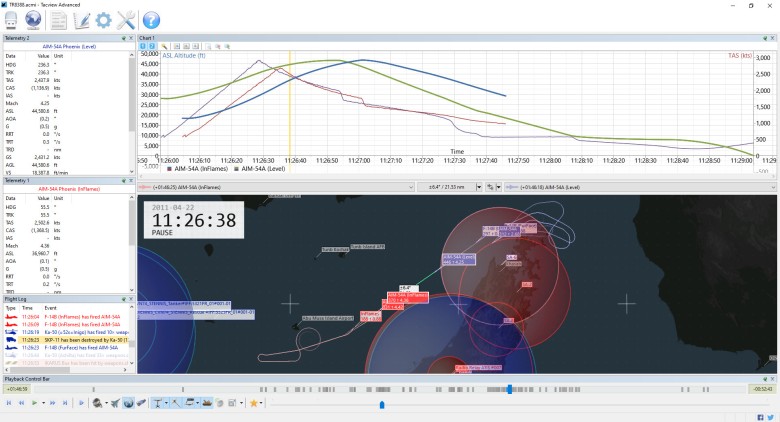I put together a video discussing the manoeuvre here:
I discussed the Crank in very simple terms almost 9 months ago, pointing out the benefits of this simple manoeuvre and the negative effects it had on the missile guidance due to the lack of TWS Auto. Since the introduction of such feature the music has changed, so I decided to rewrite the article entirely.
Old issues, now gone
Whilst the Crank has benefits, it used to have a big problem: the lack of TWS Auto meant that the radar cone was “moving sideways” during the turn, causing the WCS to lose tracking of the target. This effect in return caused the WCS to interrupt the guidance (meaning, the AIM-54 stops following its loft trajectory), wasting important energy, fundamental over longer range employments. This tendency could be compensated by the RIO manually but this was far from ideal since the antenna angle was not easy to calculate and the RIO should have then restored the previous angle.
The new TWS Auto is engaged automatically after launching a missile and it ensures that the target is always illuminated by the AWG-9 (unless the target notches, masks itself using the terrain and so on). This allows the RIO to focus on other tasks, not to mention the fact that now Jester users can finally use this manoeuvre without fiddling with additional keybinds to slew the antenna manually (not ideal whilst flying!).
‘Cranking Right!’
“Crank” it is an informative/directive call, consisting in a turn into a specified direction that aims to place the target at minimum 50° ATA (Antenna Train Angle) whilst maintaining the target into the gimbals limit. It is usually executed after a missile employment.
The immediate benefit of the Crank is understandable: by turning, the closure rate decreases, de facto increasing the time needed for a hostile aircraft of missile to intercept or reach our aircraft. This has two consequent benefits: kinetically defeating an incoming missile (or dragging it as much as possible, exponentially decreasing its effectiveness) and maintaining enough manoeuvring space for a follow-up shot before reaching MAR.
Examples
The following is from a training session (132nd.FurFace was my Pilot, 132nd.etcher our wingman vs 2x F-4 AI). Following an Employment at 35nm, I called a Crank Right (the direction closer to the friendly airspace in this scenario).
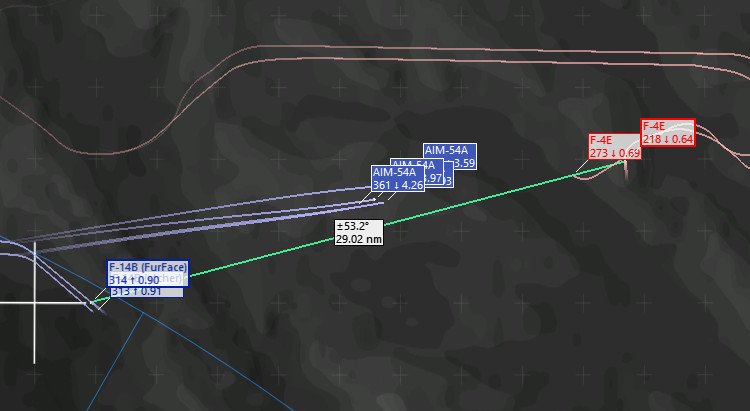
As you can see the angle between the target and our heading is greater than 50°.
Another training session. Both F-14s are flying at a relative constant speed (Buster, ~M.9).
The closure rate at launch is 1060 kts. Post launch, the Red F-14 Cranks. This simple manoeuvre reduces the closure rate speed to 900 kts, a 15% reduction just by a Cranking.
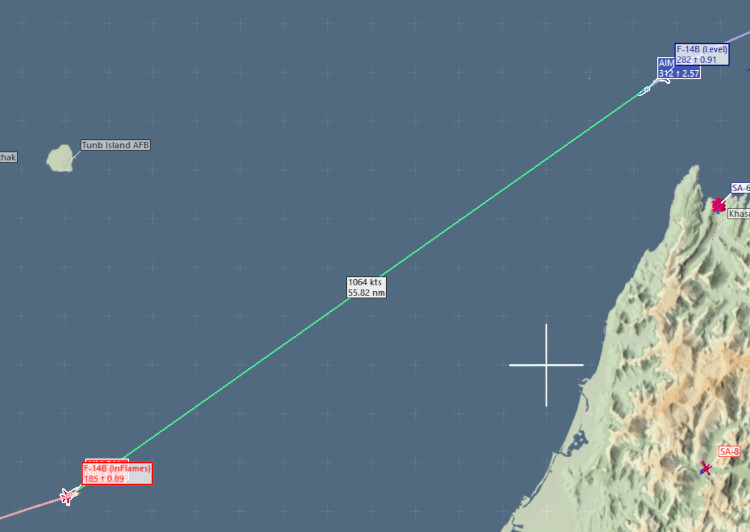
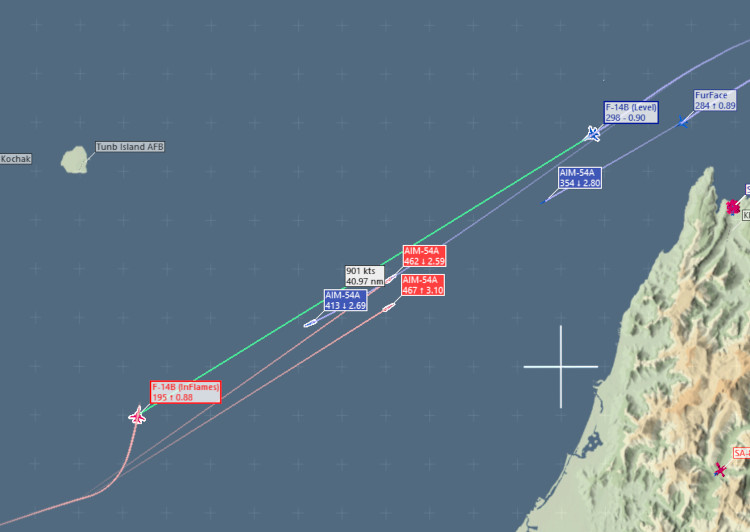
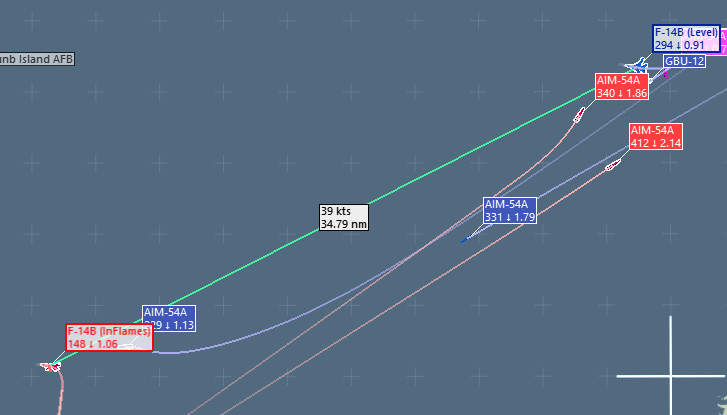
Moreover, the Red defeated the AIM-54 kinetically by the time they were Skate-ing. The Blue F-14 instead tried to Defend, but eventually got hit by the Red’s AIM-54.
The Tacview charts clearly show how the Blue AIM-54 wasted more energy chasing the Red F-14 than viceversa.
